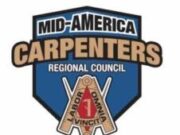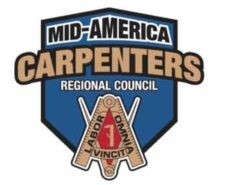The mission of the Mid-America Carpenters Regional Council Apprentice and Training Program is to provide members both classroom and hands-on training to guarantee that the safest, best trained and skilled work force is at the forefront of technology to meet the employment needs of the industry, now and in the future.
The rewards of completing a Mid-America Carpenters apprenticeship program include developing valuable, job-ready skills and earning good wages and benefits.
You will receive on-the-job training through employers who have agreements with the United Brotherhood of Carpenters and Joiners of America—the largest building trades union in North America. You’ll also receive classroom instruction at a Mid-America Carpenters training center throughout your apprenticeship.
The Benefits of Union Membership
Once you join a union local, you will work under the protection of a union contract.
This means you are guaranteed to earn while you learn, including getting regular wage increases as you accumulate classroom hours and on-the-job training time.
You’ll be eligible for health insurance (medical, prescription drugs, dental, vision), and a pension plan to help you retire with dignity.
Moving Up to Journey Worker and Getting Continuous Education
After successfully completing an apprenticeship program, you’ll be advanced to Journey Worker.
You’ll also receive a trade certificate from the state where you were trained, and from the United Brotherhood of Carpenters and Joiners of America. And, you’ll have access to continuous learning resources to help you keep up with advances in your trade and keep your skills sharp.
Apprenticeship Length
Most apprenticeship programs are four years in length, though some are five years.
On the Job Site
- Job-site hours are typically 7:00 a.m. to 3:30 p.m., Monday through Friday, though earlier start times and/or later end times are possible. Shift work and/or weekend work may be required for certain job sites and/or projects.
- Worksites change routinely, as projects change.
- You can expect to travel 30 to 90 minutes to a job site.
Classroom Training
Classroom hours can be 8:00 a.m. to 4:00 p.m., Monday through Friday depending upon what training center you attend. Classes are held at your designated training center. You must attend 160 hours/year of classroom training.
General Program Information
- You must bring your own hand tools to the job site, and to the classroom when attending training.
- You’ll be scheduled for classroom instruction every three months after entering your apprenticeship program.
- You must attend 160 hours of trade-related classroom instruction per year.
- You must purchase the books you will need for classroom training. (There is no cost to you for the training itself—either on-the-job or in the classroom.)
- A first-period apprentice’s wages are usually 40% of a Journey Worker’s wages but may differ based on the state in which you work and your trade.
- Our apprenticeship programs are approved for on-the-job training benefits for military veterans who qualify.
- The program does not offer summer or part-time employment.
It Pays to be a Union Carpenter
YEAR 1
Earning Potential – $40,000
Sample Classes
Orientation
Safety & Health Certifications
Tool & Equipment Applications
Basic Wall Framing
YEAR 2
Earning Potential – $52,000
Sample Classes
Basic Roof Framing
Commercial Floor Framing. Foundations & Flatwork. Wall Forming
YEAR 3
Earning Potential – $61,000
Sample Classes
Basic Print Reading
Molding and Trims
Stair & Ramp Forming
Transit Level / Laser
JOURNEY LEVEL
Earning Potential – $100,000+
After successfully completing an apprenticeship program, you’ll be advanced to Journey Worker. You’ll also receive a trade certificate from the state where you were trained, and from the United Brotherhood of Carpenters and Joiners of America. And, you’ll have access to continuous learning resources. This will help you keep up with advances in your trade and keep your skills sharp.
RETIREMENT
As your Carpentry career comes to an end, you’ll have the opportunity to retire with dignity and a steady monthly retirement income. The cost of your benefit is paid entirely by your employers who are considered Contributing Employers under the Plan. You do not and cannot contribute to the Plan.
Generally, you are eligible to retire with a Regular Pension at age 60 with at least 5 years of Pension Credit.
**Wages vary due to total hours worked per year


































